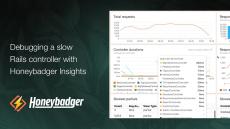- December 2024 (4)
- November 2024 (5)
- October 2024 (8)
- September 2024 (8)
- August 2024 (3)
- July 2024 (3)
- June 2024 (5)
- May 2024 (4)
- April 2024 (3)
- March 2024 (5)
- February 2024 (4)
- January 2024 (3)
- December 2023 (2)
- November 2023 (7)
- October 2023 (6)
- September 2023 (6)
- August 2023 (7)
- July 2023 (6)
- June 2023 (4)
- May 2023 (7)
- April 2023 (7)
- March 2023 (9)
- February 2023 (7)
- January 2023 (9)
- December 2022 (4)
- November 2022 (1)
- October 2022 (9)
- September 2022 (7)
- August 2022 (9)
- July 2022 (6)
- June 2022 (7)
- May 2022 (9)
- March 2022 (2)
- February 2022 (3)
- January 2022 (4)
- December 2021 (2)
- November 2021 (5)
- October 2021 (9)
- September 2021 (8)
- August 2021 (7)
- July 2021 (1)
- June 2021 (1)
- March 2021 (1)
- January 2021 (2)
- December 2020 (1)
- September 2020 (1)
- August 2020 (2)
- July 2020 (1)
- June 2020 (4)
- May 2020 (1)
- April 2020 (4)
- March 2020 (3)
- February 2020 (4)
- January 2020 (1)
Zero-instrumentation, 360 degree coverage of errors, outages and service degradation. Deploy with confidence and be your team's devops hero.
Monitoring — like web development — is complex. Every day we hear about new tools and techniques, but they're usually for big organizations. Ones with dedicated devops teams and so much traffic they care more about “error rates” than individual user experiences. When you're on a smaller team, this doesn't work so well. You know instrumentation doesn’t pay the bills. Customers do. When they encounter a problem you need clear actionable intelligence, not walls of charts and reams of logs.
What if there were a monitoring tool for developers like us? A single tool that could answer at a glance:
- Are any front-end or back-end systems raising errors?
- Is the site unreachable or unusually slow?
- Are scheduled tasks completing as expected?
- Which customers have been affected by errors today?
Honeybadger is used by tens of thousands of pragmatic developers in companies of all sizes who want to focus on shipping great, error-free products instead of wasting time building and maintaining a bespoke monitoring stack.












